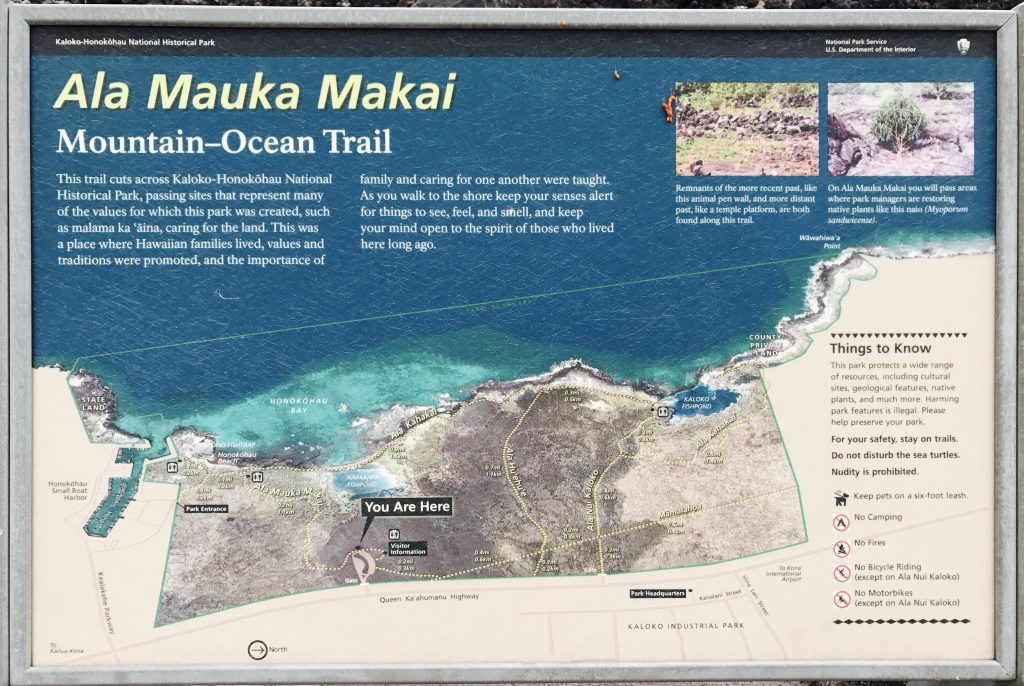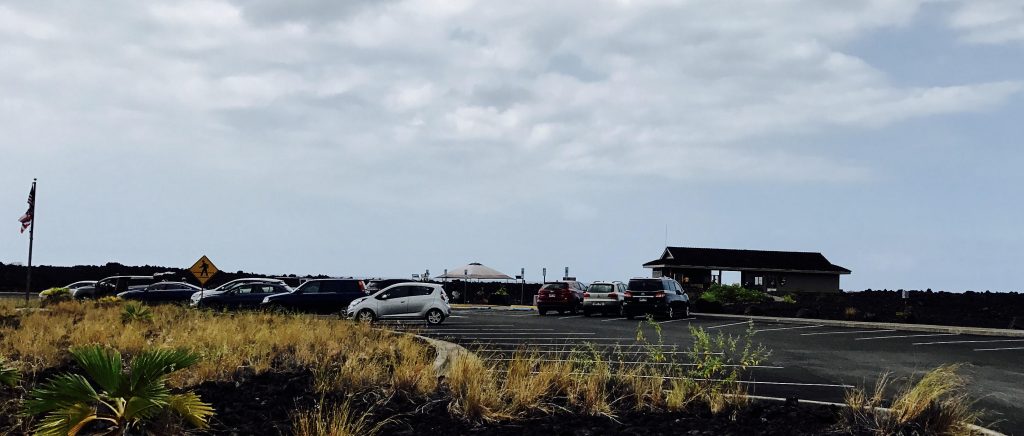Crusin’ Kaloko-Honokōhau Park with Tita Nui
On the western shore of Hawai‘i Island, just north of Kailua-Kona, is Kaloko-Honokōhau National Historical Park.
The park was established on Nov. 10, 1978, for the preservation, protection and interpretation of traditional native Hawaiian activities and culture.
Several restored trails include about one mile of the Māmalahoa Trail. It was built in the mid-19th century and evolved over the years into the Hawai‘i Belt Road that encircles the entire island.
The coastal trail is part of the Ala Kahakai National Historical Trail.
For generations, the coral reefs and bays of the area were used and continue to be used for fishing and traditional aquaculture. There, you can find a fish trap built by Hawaiians many years ago.
The park serves to protect the cultural legacies of the fishponds and the fish trap.
Dotting the lava fields are brackish water ecosystems called anchialine (pronounced “AN-key-ah-lin”) pools. Just off the shore lies coral reefs filled with many varieties of native fish and other sea creatures.
Kaloko- Honokōhau National Historical Park offers the chance to enjoy and learn about the Hawaiian culture and the natural history of Hawai’i. There are many programs and special events that are offered throughout the year.
Every November, a Children’s Annual Cultural Festival is held for fourth graders.
There are also many other educational opportunities for students of all ages.
More information can be obtained online.
When visiting the park, it is highly recommended you be prepared for hot weather and have drinking water on hand as you walk around or hike throughout the park.
Wear comfortable footwear, as trails are rocky and uneven in many locations.
It is fairly common to see honu (green sea turtles) on the sandy shoreline basking in the sun. A word of caution: Remember to view them only from a distance and do not disturb them.
The tide pools offer amazing views of sea life and are fun for everyone who wants to explore them. Many colorful reef-dwelling fish can be seen darting in and out of the tide pools as well as a few feet in front of you in the deeper waters off shore.
Snorkeling offers an even more amazing view up close of a wide variety of fish. If you’re lucky you may even see a turtle swim by.
Walking around one can only begin to imagine what life must have been like for the ancient Hawaiians who made this area their home. The decision to settle in this area was due to the cool, brackish water springs. That water source was enough to sustain the needs of the people who settled here.
It is believed that another major deciding factor was the mana (power) or spirit of the land they felt. They felt it in the natural landscape of the area, the trees, calm shallow waters of the bay and in the trade winds that blew across the land.
The Hawaiian people embraced these things and not only survived in this area, but flourished.
If you are looking for an activity for the entire Ohana that is not just fun but educational as well, Kaloko-Honokōhau National Historical Park might just be the answer.





















